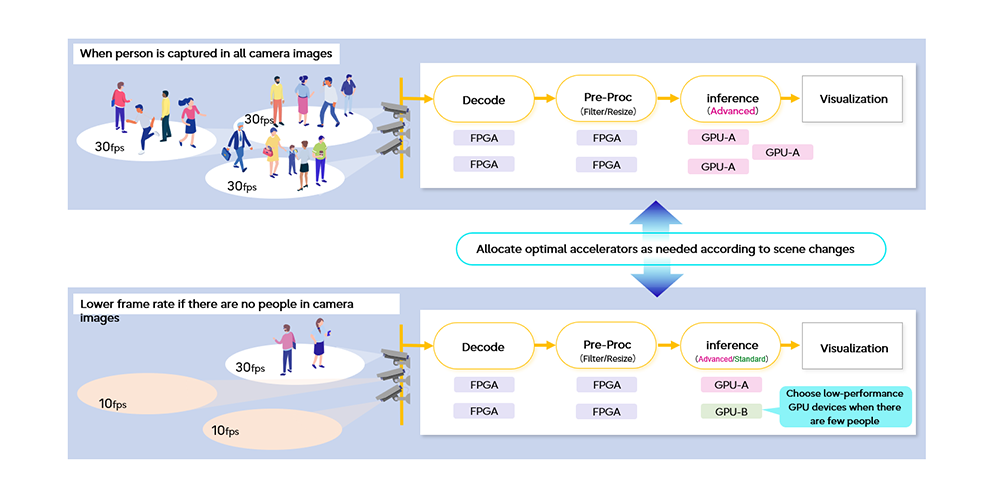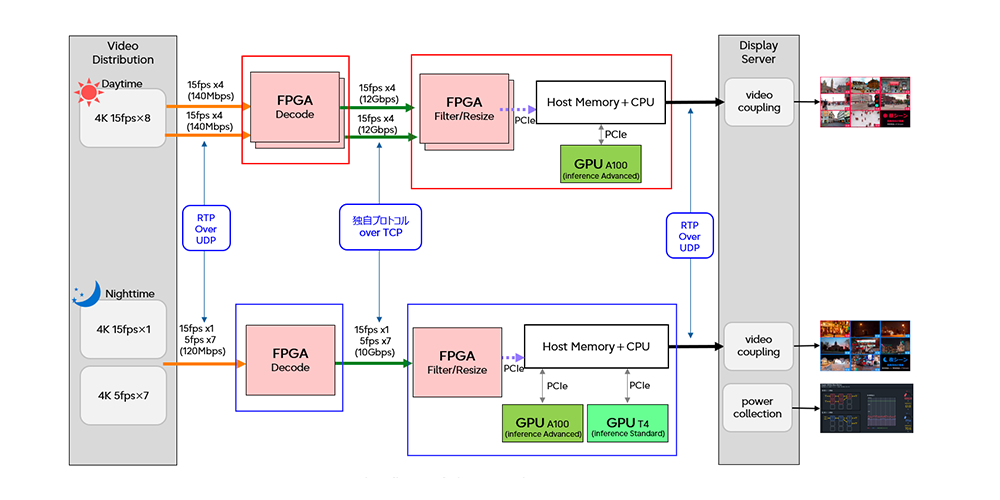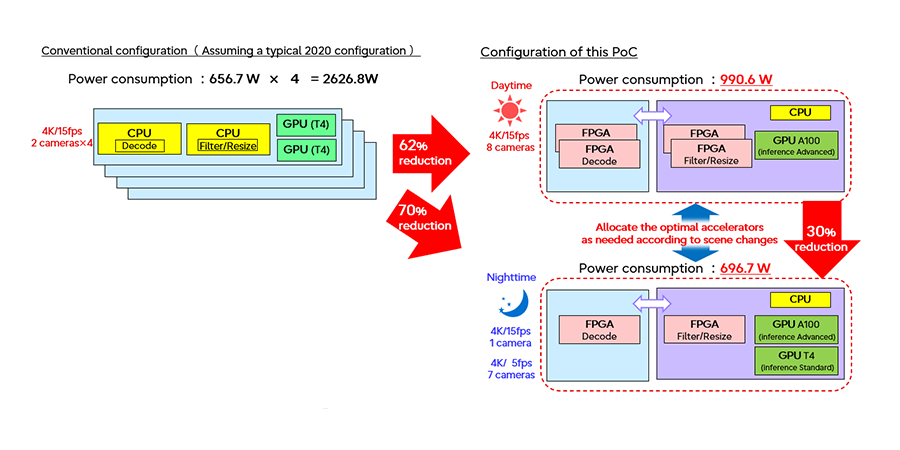Use case of real-time image analysis in CPS for social implementation of DCI
JapaneseIn collaboration with NTT, Fujitsu has demonstrated the use case of real-time image analysis in CPS (Cyber Physical System) for social implementation of DCI (Data Centric Infrastructure).
We optimized the hardware configuration and data flow according to changes in human flow over time to reduce power consumption.
Overview of PoC
In collaboration with NTT, Fujitsu has demonstrated the use case of real-time image analysis in CPS (Cyber Physical System) for social implementation of DCI (Data Centric Infrastructure).
In the demonstration, we applied computing technology with disaggregated architecture and data processing technology with less involvement of the CPU.
Specifically, while using eight 4K cameras for human detection, we optimized the hardware configuration and data flow according to changes in human flow over time to reduce power consumption.
This PoC has been recognized by the IOWN Global Forum as the first PoC to comply with the PoC Reference(*).
-
*

Detailed System Configuration
The following figure shows the configuration of this PoC. This system performs decoding, filtering, and resizing preprocessing on 4K video input, and then detects people by image inference. Image inference uses advanced inference and lightweight inference depending on the situation.
Advanced inference: Prioritize detection accuracy for images that show a lot of humans. Use high-precision AI and high-frame-rate information to infer.
Lightweight inference: Prioritize power efficiency for images that show little or no humans. Use lightweight AI and low-frame-rate information to infer.
Power consumption can be reduced by flexibly reconfiguring hardware configuration and data flow in response to situations where there are more people during the day and fewer at night.
To demonstrate the concept of utilizing various accelerators, FPGA and GPU were used in this PoC. The power consumption of this system is reduced by the unique cooperation of FPGAs and GPUs without intervening a CPU. This cooperation reduces CPU processing and is realized by the unique circuit on the FPGA.

Measurement and Evaluation
This is the measured power consumption results for this PoC.
The figure below shows the power consumption in the conventional configuration (assuming a typical configuration in 2020) and this PoC configuration. When comparing the conventional configuration with the daytime scene of this PoC, power consumption is reduced by about 62%. This is due to improvements in efficiency such as selecting the best accelerator, including hardware evolution (from NVIDIA T4 to A100), leveraging accelerators more broadly, including decoding and preprocessing, and transferring data between accelerators with less CPU intervention. In addition, when comparing the daytime and nighttime power consumption of this PoC, the nighttime power consumption is reduced by approximately 30% compared to the daytime, and approximately 73% compared to the conventional configuration.
- Note:Switching between daytime and nighttime configuration in this PoC is performed offline, and expansion is necessary for practical application.
The unique circuit on the FPGA which realizes the cooperation with the GPU without intervening the CPU is a prototype.

Conclusion and next step
We explained the proof-of-concept of the computing technology with disaggregated architecture and data processing technology with less involvement of the CPU.
In the future, we will continue to expand this technology and cooperate with the “Photonics-Electronics Convergence Technology” which is the most important feature of IOWN. With these technologies, we aim to not only enable various partners to quickly implement services that create value using a wide variety of data from the real world, but also to maximize power efficiency and contribute to a sustainable society.






